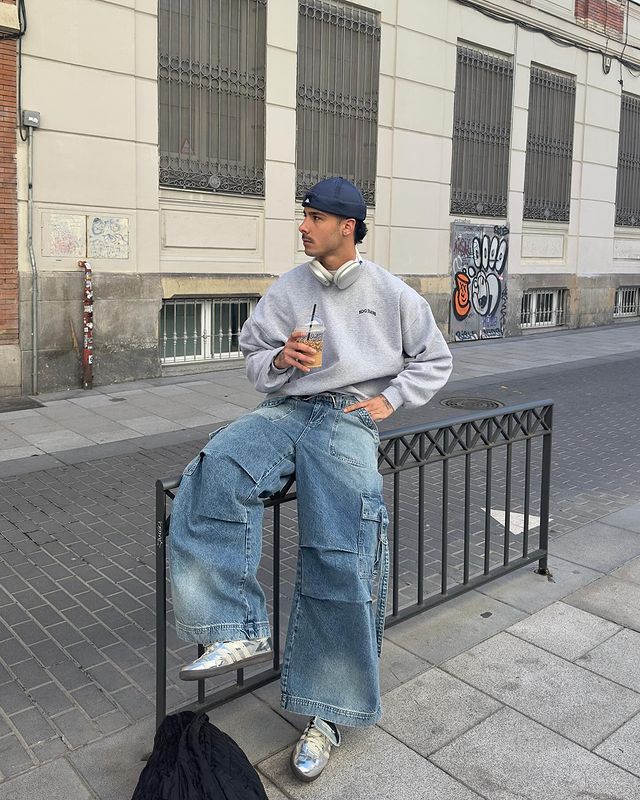Introduction
Fashion has always been more than clothing—it is a language, a form of storytelling, and a cultural mirror. In today’s world, however, the way we perceive style has shifted dramatically. We are living in what can be described as the Visual Age of Fashion, an era where images dominate communication and identity is often shaped through what we see on screens before it ever appears in our closets. At the center of this transformation lies a fabric that has quietly defined wardrobes for centuries: cotton. More than just a textile, cotton has become symbolic of accessibility, creativity, and the ability of fashion to adapt to the demands of a hyper-documented society.
Captured in cotton is not only the history of garments but also the essence of a visual culture where every photograph, video, and social post becomes a canvas for self-expression. The rise of digital platforms has blurred the line between consumer and creator, turning everyday individuals into curators of personal style. In this space, cotton holds a unique position. It is versatile enough to be shaped into luxury couture and humble basics, durable enough for sustainability debates, and timeless enough to remain at the heart of both tradition and innovation.
The exploration of cotton in the visual age is therefore more than a study of a fabric. It is an inquiry into how a material interacts with evolving technology, shifting aesthetics, and the human desire for visibility. From influencer-driven fashion moments to archival photography, from sustainable farming practices to futuristic cotton blends, the story of cotton becomes the story of fashion itself. This article delves into that narrative, examining the way cotton’s role has been reimagined, recontextualized, and immortalized in the visual age of fashion.
Cotton as a Cultural Foundation
The history of cotton is interwoven with human civilization. Long before it became a global commodity, cotton was cultivated in regions across India, Egypt, and the Americas, treasured for its softness, breathability, and adaptability. Civilizations recognized its potential not only for comfort but for identity, as cotton textiles often carried cultural symbols, dyes, and patterns that reflected local traditions.
In modern fashion, cotton continues to serve as a cultural foundation. Its familiarity offers comfort, but its ability to transform makes it endlessly relevant. A plain cotton T-shirt can signify rebellion, minimalism, or luxury depending on its context. Denim, born from cotton, has evolved from workwear to global fashion iconography. The fabric’s elasticity in meaning makes it a cornerstone of style in an era where the visual is everything.
The cultural resonance of cotton extends beyond garments. It symbolizes purity, resilience, and accessibility. It is the fabric of school uniforms, runway collections, protest movements, and high-street fashion drops. Each representation creates an image, and each image becomes part of the fashion archive. Cotton’s adaptability ensures it is not static; it evolves with visual trends, allowing each generation to reinterpret its meaning.
The Visual Age and the Rise of Image-Driven Style
The twenty-first century has marked a profound shift in how fashion is consumed and understood. Where once magazines and physical runways were the arbiters of taste, now a single Instagram post or TikTok video can define a global trend overnight. The image reigns supreme, and fashion has adjusted accordingly.
In this digital landscape, cotton is the silent protagonist. Scroll through any platform, and cotton is there: in crisp shirts photographed for professional networks, in relaxed hoodies styled for casual streetwear posts, in carefully staged flat-lays of lifestyle influencers. The ubiquity of cotton in online images demonstrates not only its dominance but its ability to serve as a neutral canvas for self-expression. Unlike more flamboyant textiles, cotton allows wearers to emphasize styling, silhouette, and personality—qualities that are easily captured in photographs and videos.
The visual age thrives on accessibility and relatability. Unlike exclusive fabrics confined to elite circles, cotton resonates universally. Its presence in viral aesthetics such as “clean girl,” “streetwear minimalism,” or “quiet luxury” is proof of its adaptability to visual storytelling. Photographs of cotton garments circulate globally, each image layering new meaning onto the fabric’s already rich identity.
Cotton and the Democratization of Fashion Imagery
The accessibility of cotton parallels the democratization of fashion imagery. Once, fashion photography was dominated by glossy magazines and professional stylists. Today, anyone with a smartphone can create editorial-worthy visuals. The fabric’s affordability and availability make it a central subject of this democratized landscape.
From thrift-store hauls on YouTube to curated TikTok transitions showing outfits of the day, cotton is at the heart of personal fashion narratives. It bridges socioeconomic divides, allowing individuals from different backgrounds to contribute to the global visual archive of style. This inclusivity is significant: it reshapes fashion’s core narrative, emphasizing diversity and individuality rather than exclusivity.
Cotton garments are often chosen precisely because they are relatable. A simple white T-shirt or denim jacket allows the personality of the wearer to shine rather than overshadowing it. In this sense, cotton becomes a democratic fabric for a democratic visual age, one where every image contributes to the collective story of fashion.




